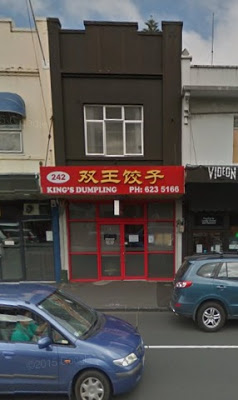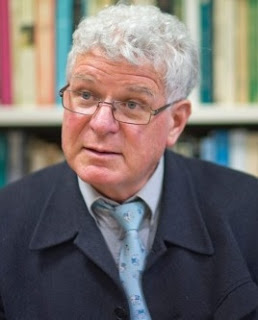 |
Hope Christian Centre, formerly the CCC
|
Today British Israelism in New Zealand is overwhelmingly associated with a few outlier sects largely made up of former Worldwide Church of God members, but that wasn't always the case. Lying out on a parallel trajectory is the curious story of the Commonwealth Covenant Church. Founded in the 1930s by two brothers, it drew inspiration from a visit to the country in 1922 by
Smith Wigglesworth, a Yorkshire evangelist who is also regarded as
a founding father of New Zealand's Elim Church. Philip Carew
in his MA thesis on the Assemblies of God writes:
"The Wilson Brothers' Commonwealth Covenant Churches commenced in Auckland and Wellington in the late 1930s bringing an intense interest in prophecy and the British Israelite doctrine." (p.19)
 |
| Smith Wigglesworth |
The Commonwealth Covenant Church was never a large body, but it was active, widely known and well resourced with at least four congregations in the North Island. In the first half of the twentieth century, it was the main group people would think to associate with BI. As late as the 1970s there was a British Israel Book Depot on Auckland's Queen Street, and a CCC church building in South Auckland (Kolmar Road in Papatoetoe). But by then BI was in decline. The 1996 census showed only 168 members (WCG had 624 in the same census). From there it was all downhill. 2006 figures showed a mere 18, and in the most recent census (2013) that dropped to 6.
What happened? It's a confused picture, made even more so by a lack of relevant information. In fact, nobody within the movement seems to have been even faintly interested in recording the history and transformation of the CCC. As a result, it is largely a forgotten footnote in the story of New Zealand Christian denominations. One of the few sources to make an effort is
Religionz: A Guide to Religions in New Zealand (2005) by Massey University academic Bronwyn Elsmore. There, under 'Christian Covenant Church', she writes:
"This denomination was formerly known as the Commonwealth Covenant Church. It has been present in New Zealand since its originator, Smith Wigglesworth (1859-1947) a Yorkshire-born lay evangelist and healer, visited this country in the 1920s... In the 1930s it was allied with the British Israel movement and included interpretation of the Bible in relation to world events."
It's important to note that Elsmore's approach was "to give descriptions that reflect the viewpoint of the believers" (p.5). The CCC, like other bodies, was able to review the draft section on their movement before publication. This meant that many entries were insipid affairs (the WCG entry is particularly egregious) and that they told the tale from a sympathetic viewpoint. Knowing this, note the past tense in that last sentence. Prophecy has been de-emphasised and BI has been relegated to something left behind after the 1930s, which was hardly accurate. Elsmore continues:
"Most recently it has gone through changes that include name, teaching and spiritual renewal. It is associated with the wider Pentecostal movement... There are around 700 members in New Zealand" (p.42,43)
The difference between census results and the claims in
Religionz is striking. Even allowing for inflated numbers, the simplest explanation is that most members no longer identified with BI or the label Commonwealth Covenant by 2005. From what I can gather, what was once the CCC in Auckland is now a small, ethnically diverse Pentecostal congregation (Hope Christian Centre) with little or no interest in its unique past.
It's worth noting for the record that overt racism does not appear to have been a defining feature of the church. At Otenuku, a Tuhoe marae in Ruatoki, there is evidence of that in the form of a plaque.
The plaque commemorates one of the last great paramount chiefs, Takarua Tamarau, who died in 1958 aged 86. It reads: "Tamarau was a protector and guide to his Maori people and a loyal supporter of the British flag."
The memorial at little Otenuku Marae, the last of the many marae which dot Ruatoki Valley Rd was erected by the Commonwealth Covenant Church "in high personal esteem and as a token of arohanui between the Maori and Pakeha peoples". (NZ Herald, Guerillas in the Mist, Oct. 20, 2007)
 |
| From BI to dumplings |
Looking at the Hope website you'd have no idea that it was founded on BI doctrine. This also appears (from what little information is available) to be true of the other congregations which seem no different from their Pentecostal brethren. Over the past thirty years, the Commonwealth Covenant Church has morphed into something quite different from the body the Wilson brothers envisioned. Effectively, as far as BI goes, it has simply disappeared off the radar and, remarkably, almost nobody has either noticed or cared. That's probably not a bad thing, though as they say, "those who forget the lessons of the past..."
And that British Israel bookstore? It relocated many years ago to cheaper premises in Mount Eden. In 2015 it's doors closed for the last time and the phone was disconnected. The shop now sells Chinese dumplings.
It may be different in the US where so-called 'Christian Identity' groups continue to spout an ugly version of BI, but in this country BI is a spent force; irrelevant both in the wider society and even within Christian culture. It happened more or less simultaneously in both the WCG (now Grace Communion International) and CCC - though different factors may well have been at work. Only a few small, graying ex-WCG fringe sects hold on, as relevant as Social Credit candidates at a General Election. Sadly for them, nobody seems to be listening.
UPDATE:
More about the CCC and its effect on members here and
more recently here. Apparently it wasn't just a bit potty, it was toxic.




